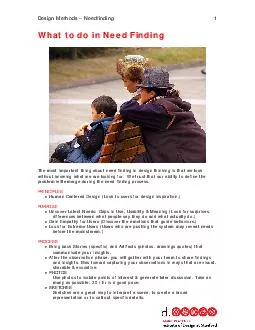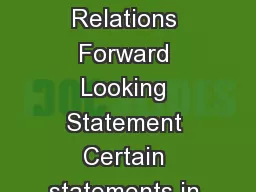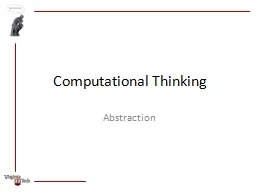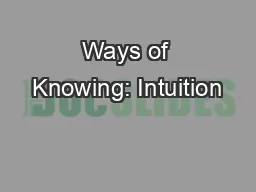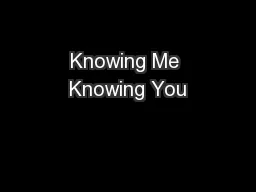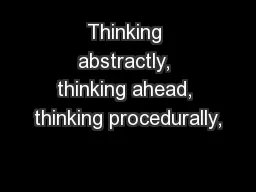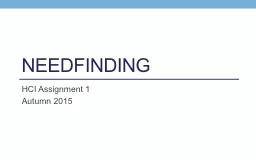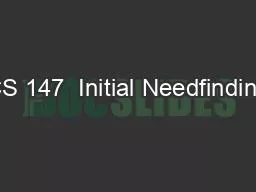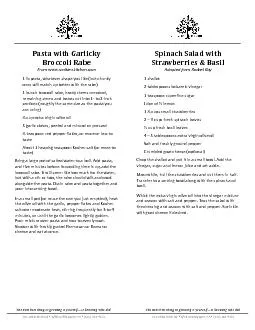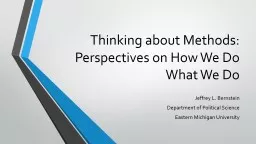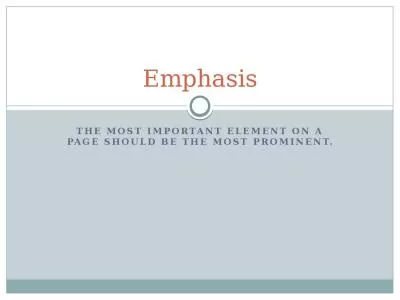PDF-Design Methods Needfinding What to do in Need Finding The most important thing about
Author : giovanna-bartolotta | Published Date : 2014-12-01
We trust that our ability to define the problem will emerge during the need finding process PRINCIPLES Human Centered Design Look to users for design inspiration
Presentation Embed Code
Download Presentation
Download Presentation The PPT/PDF document "Design Methods Needfinding What to do ..." is the property of its rightful owner. Permission is granted to download and print the materials on this website for personal, non-commercial use only, and to display it on your personal computer provided you do not modify the materials and that you retain all copyright notices contained in the materials. By downloading content from our website, you accept the terms of this agreement.
Design Methods Needfinding What to do in Need Finding The most important thing about: Transcript
Download Rules Of Document
"Design Methods Needfinding What to do in Need Finding The most important thing about"The content belongs to its owner. You may download and print it for personal use, without modification, and keep all copyright notices. By downloading, you agree to these terms.
Related Documents

